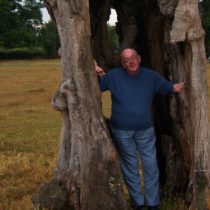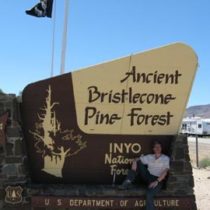Landscape Architecture for Landscape Architects › Forums › PLANTS & HORTICULTURE › Plant Local: Does a Plant’s Provenance Really Matter?
- This topic has 1 reply, 3 voices, and was last updated 15 years, 4 months ago by
 Les Ballard.
Les Ballard.
-
AuthorPosts
-
August 3, 2010 at 11:12 am #168385
 Thomas RainerParticipant
Thomas RainerParticipantAs the use of native plants moves from the fringes of our profession to the mainstream, this raises the question: does a plant’s provenance–that is, where a plant is actually from–matter?
For the full article, click here:
August 5, 2010 at 7:44 pm #168387 Les BallardParticipant
Les BallardParticipantDoesn’t the idea of creating a nursery for large projects appeal to anyone? The labour is there and the workers enjoy it. They get fulfillment from lifting saplings before the ground is cleared or pillaging local woods, even growers sites, for some money (they usually sell oversize/bare root stock cheap rather than burn it), though other material cost is generally little. These native and local plants may have qualities that comprise a local sub species and certainly in salt air and geological islands. The secure site can have quite a nursery with a temporary anti predator fence and watered by a leaky hose watering system with timers that can be taken on to the next project as needed. Alternatively, in the few years a project takes, growers can be asked to supply trees for the end of build time planting. A deal can be done on turf somerimes, too along with rabbit spirals, growing tubes, etc.
It always amazes me that a few local authorities could use the wood they cut to make boarding yet sites continue to be boarded with imported ex rain forest which, with all the carbon miles, seems daft. Building firms could also collaborate on this idea as well as temporary wire and pole fencing and other products. Even if there were no profits there would be few costs and may avoid laying off workers in winter and could provide an income. Ordinary folk volunteer labour to agencies in the UK and there is the opportunity for collaborating builders to get similar free labour. In the UK permanent employees can be gleaned from volunteer ranks and, since protestors and volunteers may be of the same local stock, using more volunteers (providing word of mouth advertising for the builder) may produce fewer protestors. Ask nuclear power station workers and their local families if they object to having a reactor nearby. All are grateful for the work, especially where there has been or is high unemplyment due, for example, to mines closing or the end of other traditional local industries.
I am ever aware of global warming and the need to move species to fill needs from drier places to match what we expect locally in the future. In the UK our wheat harvest is a fortnight later in the middle of england than the south and a again in the north, then scotlands borders and southern lowlands. Geography and geology define the climate too and, now, it may only be good to have olive groves in the south downs. There are already vineyards further north than any Roman picked a grape. All this means every site needs an apprecition and consideration of what to plant from further south (in the northern hemisphere) and what percentage of foreign or other species to plant or leave. On the streets as well as in parks varieties are used rather than the native species and this is obviously wrong. The Victorians did us proud but, please, plant native now and by the way it is cheaper!
By all means turn parks into mini arboretums but ensure every tree is recorded, is on a trail leaflet and planted with a purpose. For example, a giant sequoia, monkey puzzle or a tulip tree should be within reach of every 11 year old as well as adult and it is also possible to plant trees from the bible and other sacred texts, from other literature or even TV series and these can feature in the trail leaflets forming part of personal and teachers teaching aids. Further study can arise from the places trees origiinate, ways of feeding, counting leaves using sight grids and more. In fact about every subject can be taught in trees and they can provide great outdoor classrooms too. A circle of holly actually cropped for money, for example, can be used for siging lessons and especially to rehearse for the carol concert. Outside the ring would be birch for basic protection and to provide an upper canopy feathered with currant bushes outside of that. The cross section makes a foil to winds and inside the circle a dugout with hitching posts makes a protection, seating and even a chapel area for outdoor services. Of course I’m referring to a suitable environment and assuming the will to bear with the time taken to grow such a hedge and protect it.
Luv n Lite
Les Ballard
August 6, 2010 at 6:13 am #168386 Geoffrey KatzParticipant
Geoffrey KatzParticipantYes, it often does matter, for example if the project is a restoration project. Couple of reasons:
First, plants have ranges within which they grow “naturally” or as native to the area. Some plant species have very wide ranges, others very narrow. Many good guidebooks to native plants provide thumbnail maps showing the range for a plant. Especially with plants with wide ranges the species may be adapted to local conditions of temperature, precipitation, etc. This could be true across a local area as well, for example where a species may be more tolerant of marine salt near the coast, less tolerant inland. So for a restoration project you might want to collect seed locally, grow it out, and plant from that for good results.
Another reason is that plants live in plant communities, meaning you might find certain plants typically growing together in “natural” conditions. Some ecological areas are even named for their plant communities. For example: the maple-beech forest in northeast USA and lower Canadian shield. Plants growing in communities may just have overlapping ranges, or they may have some kind of symbiotic relationship. Using plants grown from local seed could help get the best of such relationships.
Here is an interesting US NPS article on working with native plants: http://www.nps.gov/plants/restore/pubs/intronatplant/planning.htm
-
AuthorPosts
- You must be logged in to reply to this topic.



